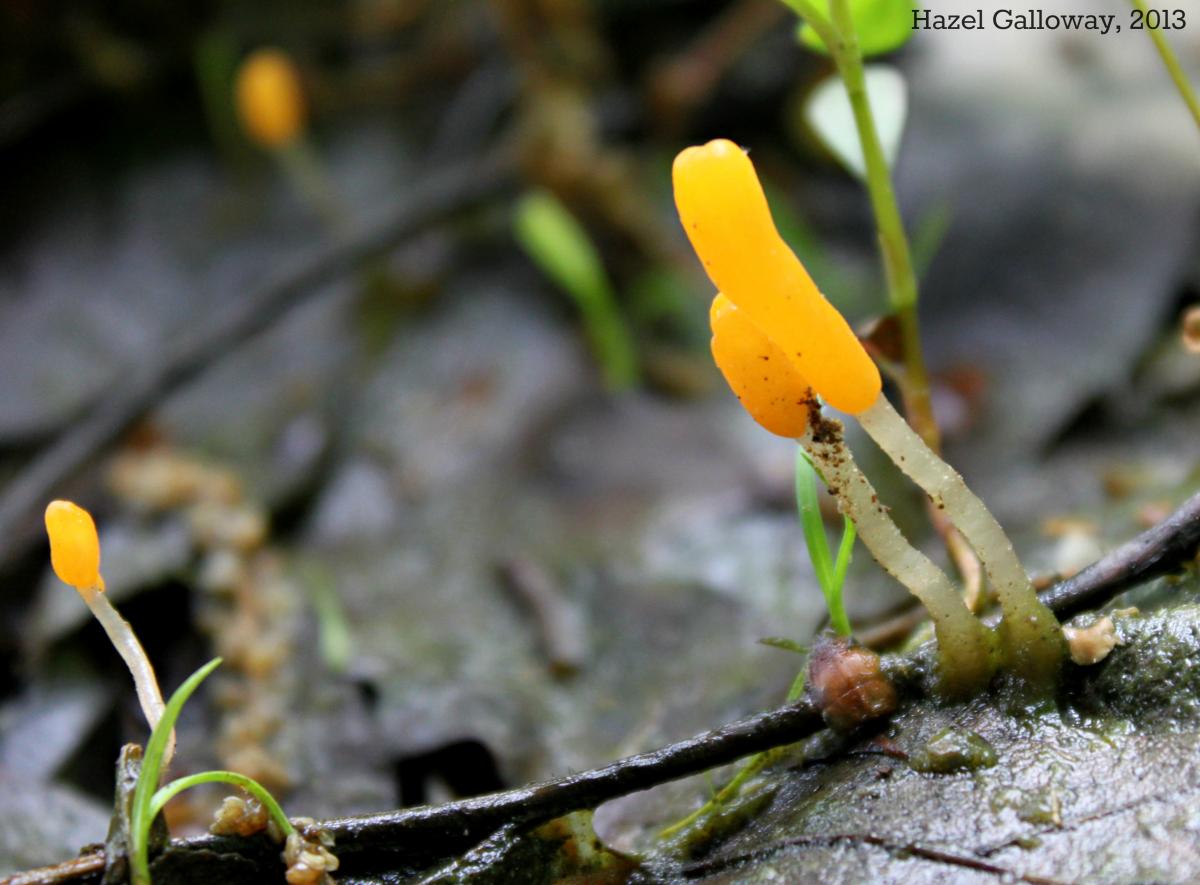The swamp beacon is a small but conspicuous inhabitant of moist, boggy areas around the station. Most fleshy fungi are saprobic organisms, and are responsible for decomposing a massive amount of wood and leaf litter in forest ecosystems. Some species of fungi have been found to reduce the mass of a quantity of leaf litter by 57% in under two years. The two primary classes of fleshy fungi—basidiomycetes (which produce spores on the exterior of a specialized spore-producing surface, like mushroom gills) and ascomycetes (which produce spores inside specialized cells called asci)—both are vital in recycling nutrients in forest ecosystems. However, basidiomycetes decompose wood and leaf litter and absorb the nutrients by means of wood-decaying enzymes that require oxygen. On submerged surfaces where standing water provides little of the oxygen necessary for basidiomycete survival, ascomycetes can constitute up to 75% of the fungal mass. These amphibious fungi, like the swamp beacon, employ a process called “soft rot” to decompose plant material in low-oxygen areas using the enzyme cellulase.
Mitrula elegans is almost exclusively a denizen of marshy and wet areas, sometimes growing directly in shallow standing water. It can be found in clusters or scattered patches, rising up to 4 cm (1.5”) above the substrate. Unusually among its close relatives, M. elegans has a “cap” that is distinct from the stem both in color and shape (caps are irregular, blob-like, and orange while the stem is smooth, straight, and translucent white). Another common name for M. elegans—the “matchstick fungus”—is derived from this appearance. The fruiting bodies typically appear in the late spring or summer in mountainous areas; during the remainder of the year, the hyphae live on and break down wet or submerged substrate. Mitrula are not wood-decaying ascomycetes, but instead grow on dead leaves, conifer cones and needles, and aquatic plants.
In the past, swamp beacons occurring in both Europe and the New World were thought to be members of the species Mitrula paludosa. However, work done in the 1970s revealed that the morphology of the spores and spore-producing structures, as well as the geographic distribution, differed substantially between the fungi on each continent. M. paludosa can be found in Europe and parts of Asia, while M. elegans is now recognized as a separate species occurring solely in the New World.
These samples were collected near the beginning of the Spring Trail in the marshy area at the base of the dam.
Article by Hazel Galloway
Sources:
- Steve Stephenson for help with the identification
- Arora, David. Mushrooms Demystified. Berkeley: Ten Speed Press, 1986. Print.
- www.amjbot.org/content/92/9/1565.full#sec-2
- www.mykoweb.com/CAF/species/Mitrula_elegans.html
- www.rogersmushrooms.com/gallery/DisplayBlock~bid~6465~gid~~source~galler...
- www.mycologia.org/content/94/3/421.full
- www.nrcresearchpress.com/doi/abs/10.1139/b77-042#.Ua8otNJgSSo




